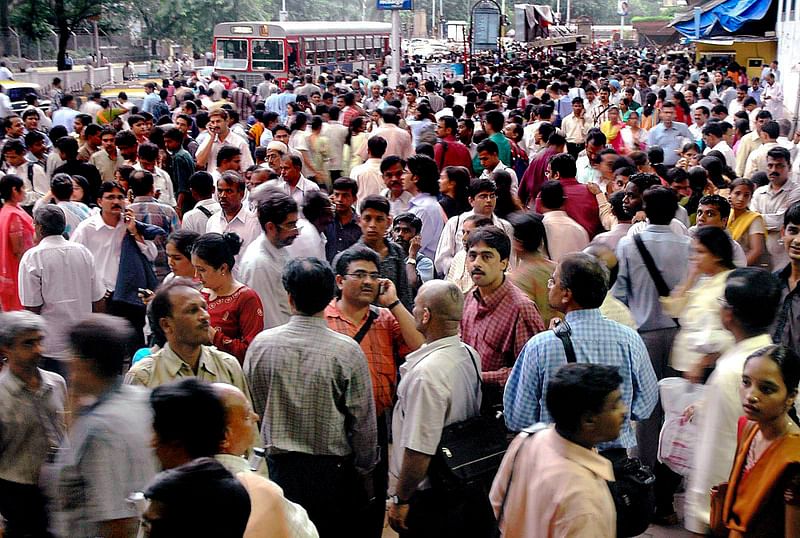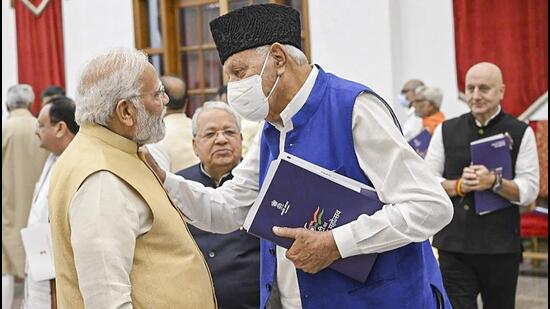
The recent Lok Sabha membership suspension of Mr Rahul Gandhi drew sharp reactions from various cross sections of the society but the desired impact will probably not materialize in the near foreseeable future. Mr. Modi’s opponents can hold protests for days alleging coercion, authoritarian rule, polarisation and majoritism but this is not likely to make a difference to the masses. That is because Mr. Modi is not only a captivating politician who has mesmerised the Indian masses but is a product of underlying socio-political and economic currents.
Since 2014, eight years back, when Mr. Modi came to power, nothing has adversely impacted his popularity, like - lynching of Muslims by cow protection gangs (his supporters), loss of jobs due to demonetisation, the misery caused to millions due to sudden national lockdown in 2020, the deaths of millions due to shortage of oxygen during the second wave of COVID-19 in April-May 2021, high unemployment rate especially amongst the youth, persistently high inflation, clamour for Hindu Rashtra, resulting demand for Khalistan, reported corruption in Swacch Bharat Abhiyaan and Smart City project, the failure of all high-profile initiatives RERA, Ayushman Bharat and Ujwala, the high handed measures against critics especially media houses, journalists, academicians and think tanks and corruption in the Adani business group. Rather each act of mis-governance and hasty decision-making has been strongly justified by his supporters, who have answers for all the questions. But the answers are increasingly making no sense and are leaving many rational Indians shaking their heads in disbelief.
Take for instance this recent conversation with my colleague, a Mr Modi supporter. Recently, around a hundred delegates from G20 member countries had participated in a three-day meet held at Indore. A week before the summit large life-size cut outs of Mr. Modi and the Chief Minister of Madhya Pradesh were placed all over Indore and all local radio channels advertised the importance of meeting almost every 10-15 minutes, in Hindi. It had left me wondering as to why local radio channels are advertising this meet.
When I discussed this issue with this colleague, he remarked, “it is the need of the hour, Modiji is doing all this to get FDI.”
So I asked, “don’t you think in that case these advertisements must be done in the country from where these dignitaries are coming.”
Prompt came his reply, “they are coming to Indore, that’s why the Government has to advertise in local channels.”
“Do they listen to these Hindi radio channels?” I asked him innocently.
“Modiji will make sure that they listen. Modiji is very smart. He is a Gujjrati, you know Gujjratis have great business sense.”
I shook my head in disbelief.
To understand Mr. Modi and his supporters one needs to examine the context and the underlying currents which contributed to his rise and power.
During the 1970s, the Indian society was simmering with discontentment due to the socio-economic and political realities – food shortages, pervasive corruption, limited economic opportunities and extreme poverty. The Hindi cinema directors used that discontentment and dormant rage to project Mr. Bachchan in anti-establishment and rebellious roles, dubbed as the "angry young man". It would not be wrong to state here that what Mr Bachchan represented in the 1970s in the Hindi cinema, Mr. Modi represented a similar dormant rage, anger, frustration, and rebellion existing in 2013-14 due to terrorism, scams, corruption, mis-governance, unemployment and policy paralysis. Mr. Modi’s supporters are not expecting him to follow righteous means to achieve the desired goals. Like, Amitabh Bachchan in those Bollywood movies of 1970s, Mr. Modi is also expected to take on the system head-on and deliver by hook or by crook.
This rage and frustration prevalent in the society was skilfully used by Mr. Modi through technology i.e., television and social media, to go national and project himself from a state chief minister to the prime minister of India who could take on the mighty and powerful. He was projected as the Angry Man from a humble background who fought inequality and lived in poverty. Therefore, technology played and is still playing the role of a force multiplier in making Mr. Modi the Amitabh Bachchan of Indian Political arena.
Therefore, Mr. Modi’s rise is a bottom-up phenomenon – he is not the one who has been parachuted from top, but he has worked his way up. Thus, Mr. Modi’s supporters are motivated by a complex mix of emotions. There is ambition and aspirations but there is also a degree of resentment, anger and frustration against the system. They have placed a lot at stake (emotionally) in support of this leader.
Mr. Modi takes on many identities. For hard core Hindus – he is the Hindu samrat who will get them Akhand Bharat (one India). For moderate Hindus – he is the reformer, hard task master and an able administrator.
In this context, it’s essential to see where this would take him as a leader and along with him where it takes us, the Indian society. Will he be seen by the future generations as the modern reformer, one who gave the country modern institutions, like Mr. Nehru gave namely, ISRO, IITs, IIMs, heavy engineering and steel manufacturing companies, atomic research institutions, metallurgy labs and a constitution to run and sustain the country. Or will Mr. Modi be remembered as an authoritarian who despite building roads, railways and ports drove the society towards obscurantism, orthodoxy, conservatism and destruction.
There is no certain way to predict the future but we can draw inferences by looking at some recent events and indicators:
1.The anti-Muslims tirade carried out by the right-wing groups, who are staunch supporters of Mr. Modi, is likely to create intense discord and disharmony in the society. If 20 million Muslims are made to feel that this country is not theirs then this does not bode well for the country’s future. This disengagement of Muslims can cost the society dearly in times of crisis. Omar Abdullah’s statement underscores this point –“Present day India is not the country that Jammu and Kashmir (J&K) had acceded to, the decision "would have been something else" if people had known that the Muslim community's religious rights will not be protected in this country”.
- The groups which were once fringe elements – Bajrang Dal, VHP, Sri Ram Sena, Hind Rakshak Sena etc. – are increasingly becoming part of the main stream and public institutions are caving in to their dictats. These groups are the Hindu Taliban. This will no doubt lead to hooliganism, hatred in the society and clamour for Hindu Rashtra which in turn may encourage separatism in the country. After all, Hinduism is not the only religion in this country and is not even practiced the same way across the country. The recent statement by the Akal Takht chief’s is relevant here“Every Sikh should try to keep licensed weapons because the time that is coming, and the circumstances which are going to prevail, demand it,” He further goes on to say, when asked about the action taken by the Govt against Sikh youth under NSA “There are lakhs who demand Hindu rashtra. Those who are calling for Hindu Rashtra should also be booked . They should also be booked under NSA."

- The Make-in-India initiative has not rejuvenated the Indian manufacturing sector which for the last one decade has been stuck at 15% of GDP and rather slid down to 13% recently. Additionally, the disastrous currency ban in 2016, which wiped out 86% of cash in circulation, and a hasty roll-out of GST, has hit businesses hard, especially the smaller ones. It was because of these reasons, along with a very weak financial sector, that economic growth slowed down much before the pandemic and the Russia-Ukraine war.
- The sluggish manufacturing sector and growing unemployment might result in India missing potential gains from the demographic dividend – which comes from increased economic activity due to a high share of working-age population. It were the young job seekers and impatient young voters (aged between 15 and 34) comprising almost 65% of our population, (which would grow to almost 485 million by 2030) which proved to be a game changer for Mr. Modi in the last two elections. However, if India’s manufacturing sector does not grow and produce quality jobs, the same youth can cause turmoil in the society, as it happened when the Agniveer scheme was launched. For India to exploit this demographic dividend, by creating more and quality jobs, its economy would need to grow at a rate more that 7-8%.
- However, we are heading into rough waters as the new World Bank report notes and the World Bank’s President David Malpass summarized, “the global slowdown in the next two years can result into a lost decade in the making – not just for some countries or regions as it occurred in the past – but for the whole world”. Now when we look at India whose exports and manufacturing is stagnant, per capita income amongst the lowest and a large young population unemployed, our economic woes will create a large force of disgruntled elements.
- The authoritarianism and majoritism is creating another peculiar situation where important policy bills concerning the welfare of people are being passed without any discussion as there is no opposition. This implies that few people from the ruling junta sit together and decide what is good for the people and announce the scheme. Instead of listening to the dissenting voices and engaging people in nation building, the central government is stifling their voices. It feels that wining elections are increasingly becoming more important than listening to dissenting voices and nation building. Ostensibly, at some point of time this will start hurting the masses and they will protest, like it happened with the farm laws.
Conclusion
The undercurrents of 2024 elections are likely to set the tone of the nation. The degree of polarisation, the violence, and the issues on which these elections will be fought will decide whether the society as a whole, marches forward facing the challenges or it stumbles, with each community at loggerheads with the other.
There is no doubt that Mr. Modi will win, even if his majority is dented a bit, but it is the tone, as I said which will matter. If Mr. Modi, does not re-invent himself like Amitabh Bachchan did after a series of box-office failures, there are chances that the society may further get into a vicious circle of slow growth, frustration, polarisation and violence.
The riots and arson, have already commenced, the institutions have started caving in. The warning bells have already started ringing. Its for the society and the politicians to listen to those, if they don’t, sadly everyone loses. The better brains have already started fleeing abroad.
However, no other political leader has been able to capture the underlying socio-political currents as successfully as Mr. Modi and therefore, there is no credible leader to take on the divisive forces. This has meant that Mr. Modi is yet to suffer a box-office failure and till the time that does not happen he will have no incentive to change.
